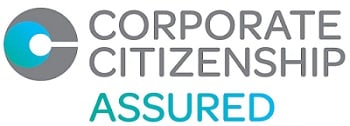Two-way communication
Listen to our customers and make communication easy.
We’ve been busy constructing giant underground storm water tanks to prevent flooding; building sewers large enough to drive a car through; cleaning and replacing some of the largest water pipes on the network and upgrading and maintaining our treatment works and reservoirs to keep them in tip top condition.
No one likes roadworks, of course, which is why we do everything we can to reduce disruption, give customers prior notice of work, and explain the reasons behind each scheme.
We work with customers and stakeholders to address any concerns they have, and accommodate special requests during work – such as maintaining delivery driver access for businesses.
If a business feels that our works has had an impact on their trade, we also have a policy in place to allow them to claim for any loss of profits ( PDF 141 KB opens in a new window).
For our medium and high impact projects, we plan an integrated communications approach using a variety of channels, including letters, leaflets, exhibitions and drop-ins; site signage; local press ads and online communications.
We try to make our material clear and down to earth, featuring easy to follow site and diversion maps.
This year, we’ve been looking at how we can use these communications to provide some added value to the communities we are potentially disrupting, as well as publicising our capital schemes For example, where practical, we’ve been including local business messages on our billboards and radio ads.
Despite our best efforts, however, we don’t always get it right. For example, a sewer improvement project to replace the sewer along with Wilson Bridge (a well-used footbridge) in Bolton, caused unhappiness among local residents.
It was one of our smaller schemes, comparatively, but generated some vociferous opposition, due to the length of time the bridge was out of commission. We planned the project thoroughly, liaising with local residents, businesses and council officers, but were unprepared for the level of opposition!
The sting in the tail occurred right at the end of the project, when we filled in potholes on the access road caused by our work traffic, resurfacing half the road to make good. Unfortunately, local residents wanted both sides of the road resurfacing and much was made of the ‘half job’ resurfacing in local media.
It goes to show that no matter how rigorous our planning, we won’t always get it right. We continue to learn from our mistakes, as much as our successes, so that we can anticipate potential pitfalls next time around.
We want customers to have a fantastic experience when they deal with us, and we aspire to be one of the very best service providers in any industry – not just the utility sector.
Over the past three years we have carried out an extensive research project, engaging with more than 30,000 customers to find out their priorities, and where our services can be improved.
The research highlighted that customers want to be able to contact us easily, through a channel of their choice, and to be kept informed about the resolution of their issue.
We continue to focus on providing a broad mix of contact channels to improve convenience for our customers.
Recent improvements include:
Increased take-up of My Account: our online customer account management service continued to go from strength to strength, with over 350,000 customers now registered and a 40 per cent increase in online transactions. Customers can use the service to view their bill and sign up for paperless billing, check their balance and make payments. They can also give a meter reading, let us know they are moving and email us. It’s quick and easy to use and it’s all within in a safe and secure environment.
Improved email communications: our customers told us they wanted to be able to attach documents to their emails so earlier this year we improved our email capability to enable our customers to do this.
Introduced an SMS text feedback channel: during the last 12 months we’ve received over 20,000 texts and web chat surveys from customers giving feedback on the way we handled their enquiry.
Changed our phone numbers: customers said they wanted it to be cheaper to call us. In response, we’ve changed our phone numbers to a mix of 0800 and 0345 numbers, providing more cost effective calls from mobiles and landlines.
